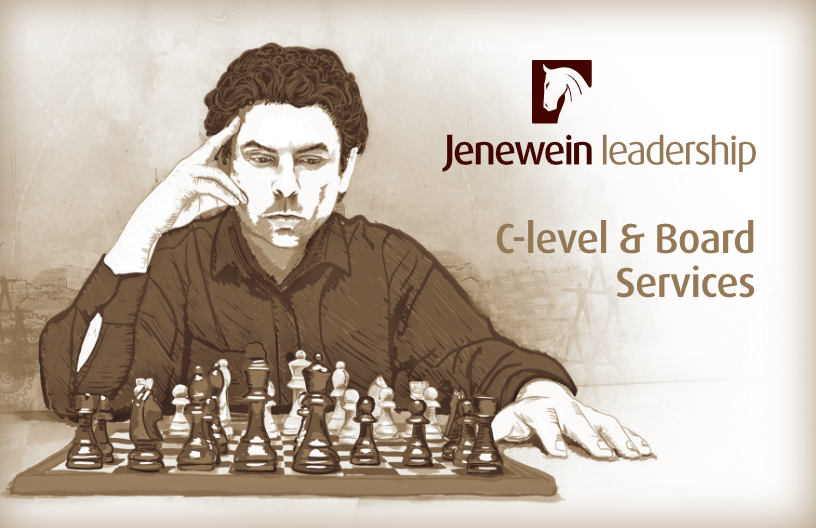Naše poradenské tímy sú aktívne v rámci globálnych partnerstiev a networkov, vďaka čomu dokážeme držať prst na pulze najnovšieho vývoja a v kombinácii s inovatívnymi prístupmi ponúknuť osvedčené riešenia v stredoeurópskom regióne i mimo neho.
Medzi našich klientov patria medzinárodné spoločnosti, české i slovenské firmy, investori, privátne holdingy, rodinné podniky, ale aj verejný a neziskový sektor. Naše poradenské tímy sa usilujú o vytváranie obojstranne výhodných partnerstiev a budovanie dlhodobých vzťahov.
Viac >>
Články & Štúdie
All Eyes on Slovakia's Flat Tax
As interest in the flat tax grows, the world seems transfixed on an unlikely country, Slovakia, whose 3-year-old tax reform program is paying early dividends.
Essentially applying a uniform tax rate on citizens (and sometimes companies) regardless of income, countries that have adopted a flat tax are presently clustered in Eastern and Central Europe. But it is Slovakia—with its 19 percent flat rate—that has captured the world's attention of late, says HBS professor Laura Alfaro. Why?
What are the goals and complexities of introducing a flat tax? Is a flat tax a good basis for attracting foreign direct investment and for sustainable economic growth?
These questions and more are explored in a forthcoming business case coauthored by Alfaro along with HBS professor Rafael M. Di Tella, Executive Director of the HBS Europe Research Center Vincent Dessain (HBS MBA 1987), and Research Assistant Ane Damgaard Jensen.
The case, "Rovná daň: The Flat Tax in Slovakia," describes how the flat tax was introduced there in 2004 as well as the surprising influence of Slovakia ever since. But the concept of a flat tax is not new: Jersey began one in 1940 and Hong Kong followed in 1947. It was post-communist Estonia that launched the Eastern European wave in 1994. Though Slovakia was not the first country to adopt a flat tax nor is it the biggest economy, Slovakia has raised some important issues regarding tax harmonization within Europe and the integration process.
"The case of Slovakia highlights the fact that the beliefs and views of a country on what is fair [do] matter for the long-term sustainability of reforms," says Alfaro.
Alfaro, Dessain, and Jensen joined forces for an e-mail interview with HBS Working Knowledge.
Martha Lagace: What is a flat tax, what does it aim to do, and why can it be controversial?
Vincent Dessain: A flat tax is as an income tax; it basically applies the same rate of tax to everyone and to each component of income. As opposed to a progressive tax system, which has the average tax rate increasing with the level of income, a flat tax doesn't distinguish between different levels of income. Wealthy, middle class, or poor, you pay the same rate. Also, a flat tax system is often completely free of deductions, exemptions, and exceptions. These efforts aim to make the tax system more transparent and easier to administer, while it should also reduce the incentive and possibility to commit tax evasion. Overall, taxes do have a real impact on the business environment, and in most cases business is in favor of the simple and often low flat tax.
Laura Alfaro: Naturally, the controversial part of the concept lies in the fact that it can be difficult, from a fairness perspective, to argue that the poor should pay the same rate of tax on their income as the rich. Most societies don't believe that the poor should pay the same rate as the rich. For this reason, many economists advocate including a tax exemption at the bottom in order to protect the groups earning the least. Nevertheless, opponents claim that a flat tax is likely to redistribute more of the tax burden from the rich to the middle classes. The fairness issue is very important in this case. It is not easy to say what "fair" is, but a "fair tax" is one that guarantees a socially desirable distribution of the tax burden, which is of course shaped by the views and beliefs of a country.
Ane Damgaard Jensen: Overall, people have different views of what a flat tax is and what it should allow. For example, in the case we highlight Steve Forbes' view of the flat tax, which is very different from Pat Buchanan's. But in fact, the flat tax proposals of these two individuals, together with the Slovak example, cannot be deemed true flat taxes because of the tax exemptions that have been added at the bottom. Technically, most countries haven't implemented theoretical flat taxes.
Q: Slovakia introduced a flat tax in 2004 with a 19 percent rate on personal income, corporate income, and value added tax. What are some of the complexities of the Slovak situation that made you decide to highlight it as a case?
Alfaro: I initially wanted to explore some of the many interesting developments going on in Eastern and Central Europe for my course Institutions, Macroeconomics and the Global Economy, so I contacted Vincent at the Europe Research Center to find out if they could help me with some ideas. After a period of transformation during the early 1990s, many countries in the former Eastern Bloc went through breakthrough reforms, remarkable economic growth, and increasing macroeconomic stability. Further, many of the countries joined the European Union and hence took part of one of the strongest economic regions of the world, benefiting businesses.
Dessain: We pitched this idea to Laura because a case on the flat tax, which has been widely implemented in Eastern Europe (in Estonia, Lithuania, Latvia, Russia, Serbia, Ukraine, Slovakia, Georgia and Romania), would be able to illustrate many of these issues. We discussed the idea with an HBS alumnus in Vienna, Georg Kasperkovitz (HBS MBA 1999), and decided to highlight Slovakia's experience when we realized that the flat tax was one of the hot topics. Meanwhile, we were witnessing "reform fatigue" within the populations of some of the Eastern and Central European countries; seemingly successful governments that had managed to reform economies were defeated by newcomers that promised more emphasis on the welfare state. This clash was interesting to us.
Jensen: Slovakia previously had a tax system that wasn't particularly supportive of the business environment: It was complicated and distortive, consisted of several rates, and included numerous exemptions and deductions. Former Finance Minister Ivan Mikloš wanted a simple, neutral, and non-distortive system. The system that was created had no special rates, no exemptions, no exceptions, and almost no deductions. The Finance Minister told us that Slovakia had implemented one of the most simple, neutral, and effective systems in the world that improved the business environment, reduced tax evasion and, in connection with other reforms, brought about high and sustainable economic growth. And the situation kept evolving throughout the course of writing the case; in 2006, the Slovaks elected a new government. In March 2007, the case was taught twice in the elective course Institutions, Macroeconomics and the Global Economy, to a total of 250 MBA students at HBS.
Alfaro: The particular case of Slovakia has caught the world's attention. As you know, Slovakia was not the first country to adopt it, nor is it the biggest economy. Still, Slovakia has been the example pulled out when discussing the success of the flat tax. To some, it was the fact that Slovakia was the first OECD country to implement the flat tax. But Slovakia—and the fact that many Eastern European countries have adopted or are thinking of adopting a flat tax—also seems to have raised some important issues regarding tax harmonization within Europe and the integration process.
Q: Could the flat tax only have been introduced in the context of other reforms that Slovakia was managing during its post-communism transition, such as labor reform and privatization?
Alfaro: It is true that the countries that have introduced a flat tax have all been in macroeconomic situations where something had to be done to foster growth and attract investments, which indicates a major trend for linking tax reform with, for instance, privatization and labor and welfare reforms. So existing evidence indicates that overhauling other parts of the public system, in order to afford a perceived cut in tax revenues through a flat tax implementation, is needed. This, however, does not indicate that the opposite is impossible. It also has to be said that a lot of the appeal behind the flat tax is related to the reduction in the administrative burden, but also that flat taxes tend to be low. So one could question whether the theoretical flat part of the flat tax concept is in fact what has been attractive or whether the flat aspect has been a political way to sell the overall tax reform, and hence mostly low taxes.
Q: Can Slovakia serve as a model for other countries that are weighing a flat tax? If so, how should other countries learn from positives and negatives of the Slovak experience?
Dessain: Estonia, Slovakia, and other Eastern European countries are in fact already serving as models for other countries that are considering adopting a flat tax. The former Prime Minister of Estonia, Mart Laar, was the pioneer in Eastern Europe, implementing a flat tax in 1994. One of the fascinating aspects about the Estonian example is that Laar thought that a flat tax had already been tried and proved successful in Western economies, as the literature on the concept was widespread and it seemed so obvious to him what a flat tax could do. So he decided to give it a try. And this is essentially what he advocates: that countries should try it out. Laar has made a tour of many countries and recently paid a visit to Costa Rica to talk to government officials, members of congress, economists, and businesspeople about his country's experiences with the flat tax. He also gave advice on what he believed the flat tax should be linked with (privatization and access to a free trade area) in order to turn the economy around and make it grow.
Jensen: Former Finance Minister Ivan Mikloš, who introduced the flat tax in Slovakia, has also been a strong advocate for the wider spread of the concept. Martin Bruncko, a 2003 graduate of the Harvard University Kennedy School of Government and the chief economic adviser to Finance Minister Mikloš, has traveled extensively throughout Europe in order to explain what a flat tax is and what it can do. Interestingly enough, Western European countries are also listening. But again, the fact that many countries are thinking about adopting a flat tax may have something to do with finding a political way to implement low corporate tax rates. And there are fears of a race to the bottom. However, recent events in Slovenia might demonstrate a reversal in Eastern Europe. Slovenia is one of the smallest among the recent wave of EU entrants, and it is also the closest to the standards of living enjoyed in the more established EU countries. Slovenia rejected the flat tax, which is consistent with the aversion seen in some EU 15 countries.
Alfaro: Overall, other countries can look to Slovakia as a model of what might happen when a flat tax is adopted, as this example illustrates several aspects. The overall economic performance has improved: Real output growth in Slovakia was 8.2 percent in 2006—a record high. However, it is difficult to disentangle the effects of the flat tax from that of the other reforms. Clearly, a lesson to be learned from Slovakia is that such a drastic change to fundamental tax habits needs to be thoroughly explained to all individuals and groups affected by it. It has to be taken into consideration, however, that flat taxes in these countries were often made possible by the fact that tax collection had been limited under the communist regime, so in any case tax revenues were likely to increase. Recently, the government elected in June 2006 introduced some changes to the original reforms, even through these changes were, in the eyes of many, quite minor. But again, the case of Slovakia highlights that beliefs and views of a country on what is fair matter for the long-term sustainability of reforms.
Q: What do you think it would take for the idea of a flat tax to gain ground in the U.S. or Western Europe?
Dessain: Economists and business leaders alike are talking about flat taxes in many countries. As Western European countries lose ground vis-a-vis countries in Eastern Europe endowed with low tax rates, low salaries, and skilled labor, governments will increasingly look for ways to reform their tax and labor systems in order to attract business—or simply stop businesses from delocalizing. The direct effect of the Slovak flat tax can be seen in Europe, where neighboring Austria has lowered its corporate tax rate from 34 percent to 25 percent. This has been perceived by many as a clear sign that the Slovak reforms have been attractive to foreign investors. In response to broader initiatives, Germany has recently decided to reduce its corporate tax rate from 39 percent to below 30 percent in an effort to make the country attractive for investors.
Jensen: Similarly, voters in Finland decided to oust the ruling Social Democrats in favor of parties promoting tax cuts in response to the attraction of neighboring Estonia's flat tax. Most recently, the United Kingdom reduced its corporate tax rate from 30 percent to 28 percent and its income tax rate from 22 percent to 20 percent in an attempt to simplify the tax system. Still, the British government decided to reduce social security contributions and industry allowances, as the initiative was supposed to be revenue neutral.
Alfaro: In spite of these examples of tax reduction, there is a long way to go from lowering tax rates to introducing a flat tax in the U.S. or in Western Europe. This would require a change of attitude in countries marked by a substantial history with progressive taxation. To many, the concept of applying the same rate of tax to everyone regardless of income is simply not possible. Most certainly, the elimination of deductions and exemptions—such as mortgages, etc.—is a battle many politicians will not want to take on in the near future. Also, the argument that a flat tax is likely to be paid by the middle classes is probably one reason why the concept has yet to gain ground in the U.S. or in Western Europe; the middle class simply doesn't want it. As economist Joseph Schumpeter said, "The spirit of a people, its cultural level, its social structure, the deeds its policy may prepare—all this and more is written in its fiscal history."






















